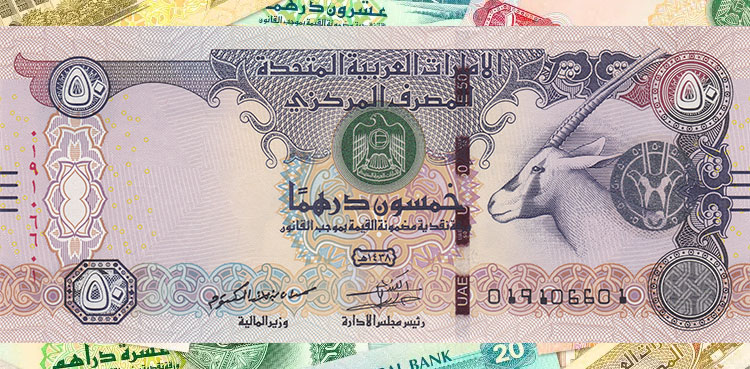Karachi/Dubai, August 5, 2025 – The UAE Dirham (AED) has declined to 76.97 Pakistani Rupee (PKR) today, marking a decrease of 0.15 PKR from yesterday’s rate of 77.12 PKR, as verified by reliable financial sources tracking interbank and open market rates.
This drop follows a robust performance in June, when the AED rose by 0.81 PKR, advancing from 76.44 PKR at the month’s start to 77.25 PKR by its close, with a peak of 77.6111 PKR on July 1, 2025. The Dirham’s enduring strength, despite today’s dip, reflects the United Arab Emirates’ visionary economic policies and its pivotal role as a global financial hub.
Currency Spotlight: AED and PKR
The UAE Dirham (AED), adopted as the official currency of the United Arab Emirates in 1973, is anchored to the US Dollar at a fixed rate of 3.6725 AED to 1 USD, as regulated by the Central Bank of the UAE. This peg ensures the AED’s dependability, positioning it as a trusted currency for international trade and investment across the UAE’s seven emirates. The Pakistani Rupee (PKR), Pakistan’s official currency since 1948, operates as a floating currency under the State Bank of Pakistan’s oversight, susceptible to shifts driven by domestic economic factors, global market trends, and geopolitical events.
Pakistan’s Economic Dynamics: Remittances and Trade Challenges
Today’s decline in the AED-PKR exchange rate offers slight relief for Pakistani businesses importing from the UAE, reducing costs compared to yesterday’s higher rate. However, the Dirham’s overall strength, bolstered by June’s gains, continues to shape Pakistan’s economic landscape. For the millions of Pakistani expatriates in the UAE, the still-strong AED sustains elevated remittance values, which reached $717.2 million in June 2025, per State Bank of Pakistan data, reinforcing the UAE as Pakistan’s second-largest remittance source after Saudi Arabia. These funds are crucial, fueling household incomes and sparking economic activity in regions like Punjab and Sindh. Yet, the elevated exchange rate keeps import costs high for UAE goods, from luxury products to essential goods, posing challenges for Pakistani businesses and consumers.

Leave a Reply